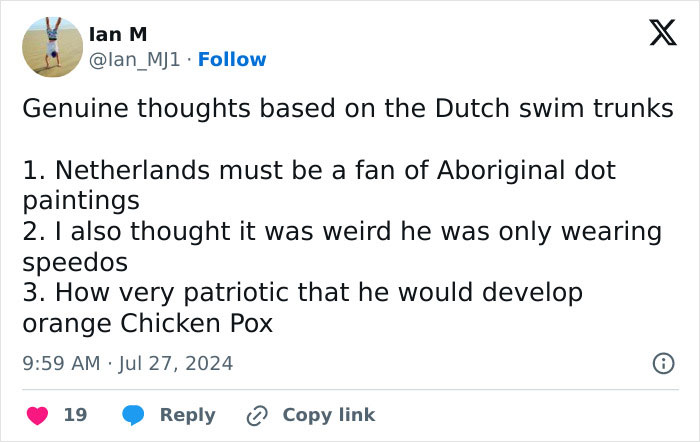What would the Olympics be without some good old meme-esque content? Enter Arno Kamminga of the Netherlands, who competed in the Men’s 100m Breaststroke during Day 1 of swimming and his “thirst trap” swimshorts. Finishing second place didn’t matter, as he won social media’s devoted attention.
Competing at the Olympic Games Paris 2024 at Paris La Defense Arena on Saturday (July 27) in Nanterre, France, the 28-year-old athlete rocked a tightly fitted, glamorous pair of trunks.
In a decision that was clearly made by a public relations team, the Netherlands has opted for the most flesh-colored orange on the thighs of their trunks, News.co.au reported on Monday (July 29).
As a result, the swimwear created an optical illusion that made Arno appear almost naked, leaving people stunned on social media, as a person wrote on X (formerly known as Twitter): “Definitely watching for the sport.”
Someone commented: “Name???”
“IN PUBLIC? IS THIS LEGAL?” a separate individual chimed in.
Arno Kamminga of the Netherlands competed in the Men’s 100m Breaststroke on Day 1 of swimming
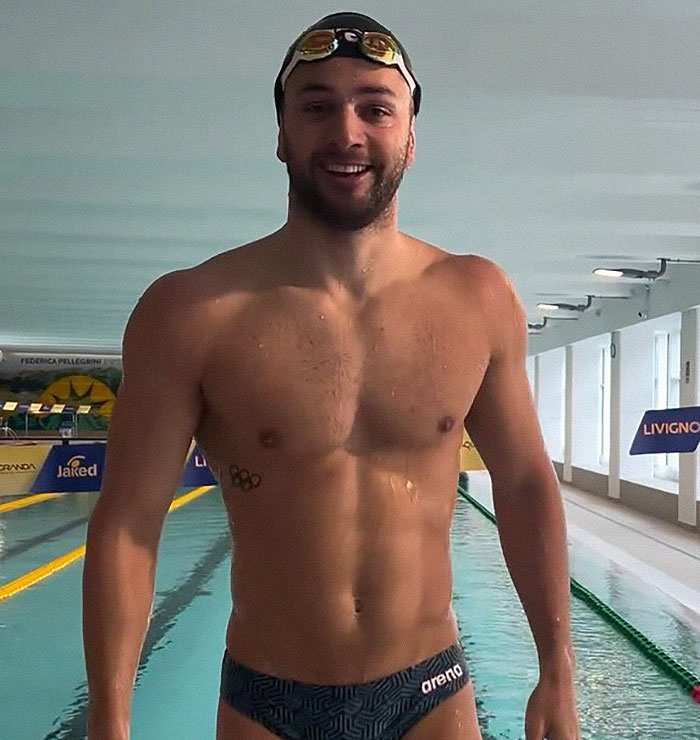
Up until the 1996 Atlanta Games, swimmers typically wore suits that covered as little of their skin as necessary, NBC Olympics explained in February 2024.
Shaving one’s entire body was the primary way to enhance speed through the water. Since then, advancements by manufacturers have created a wholesale change in the looks of Olympic swimmers.
Atlanta marked the beginning of the “bodysuit revolution,” the outlet stated. At those Games, neck-to-knee swimsuits made their Olympic debut, with Speedo’s model, the Aquablade, worn by several medal winners.
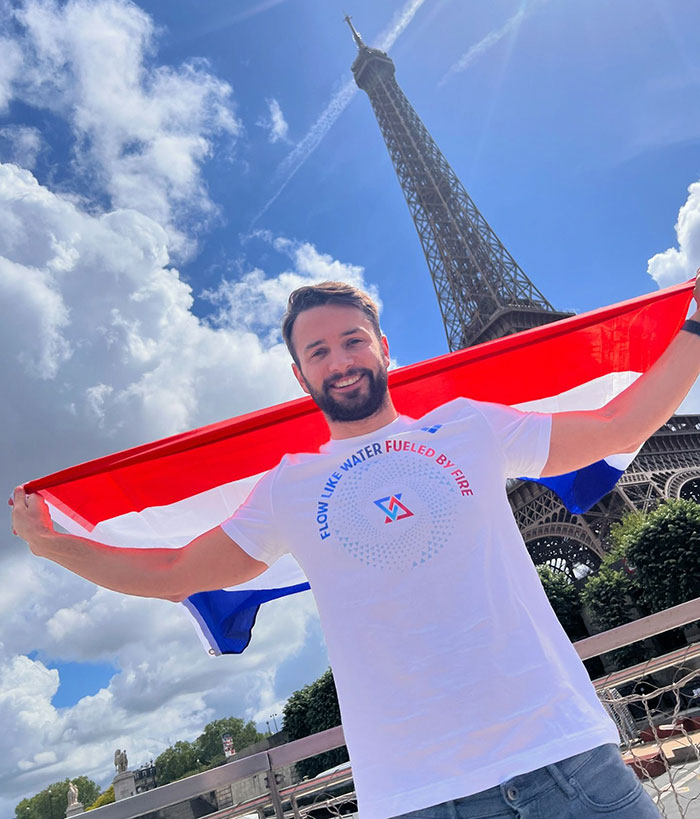
Prior to the 2000 Sydney Games, when swimmers began wearing suits that covered all parts of their body except their feet, hands, and head, some observers felt the suits were performance-enhancing and, therefore, against the rules.
As per NBC, the World Aquatics, swimming’s governing body, declined to ban the suits and, as a result, most competitors in Sydney wore some variation of the bodysuit. Most gold medalists at the 2004 Games wore Speedo’s Fastskin suit.
For the Beijing Games, Speedo introduced the LZR Racer suit, which was touted as the world’s fastest swimsuit, the American broadcaster noted.
Arno competed at the Olympic Games at Paris La Defense Arena on Saturday (July 27) in Nanterre, France
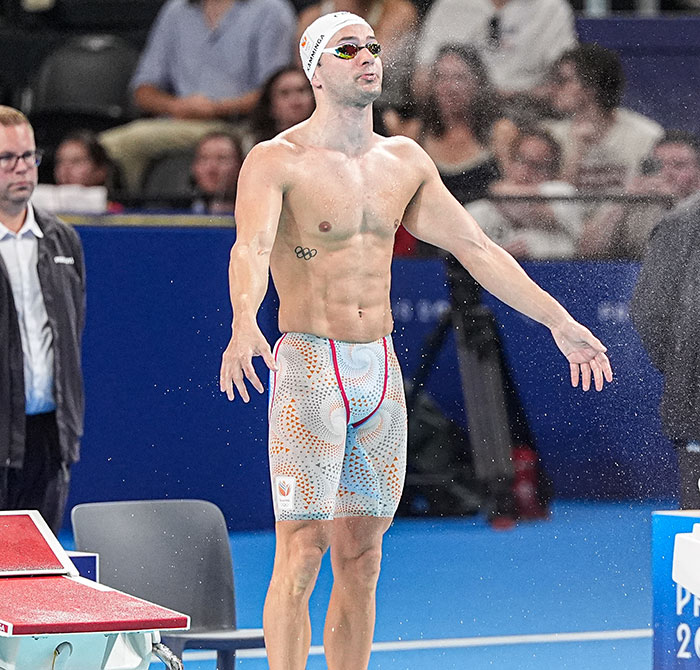
Made from a compressive, water-repellent, and chlorine-resistant fabric, it was said to reduce drag and provide the most streamlined shape.
The Dutch swimmer finished in second place in his Men’s 100m Breaststroke event, recording a time of 59.12, The Spun reported on Sunday (July 28).
All jokes aside, Arno expressed his immense disappointment in his result, writing alongside a photograph of himself shared on Instagram during the competition: “Not what I came for,” with a broken heart emoji.
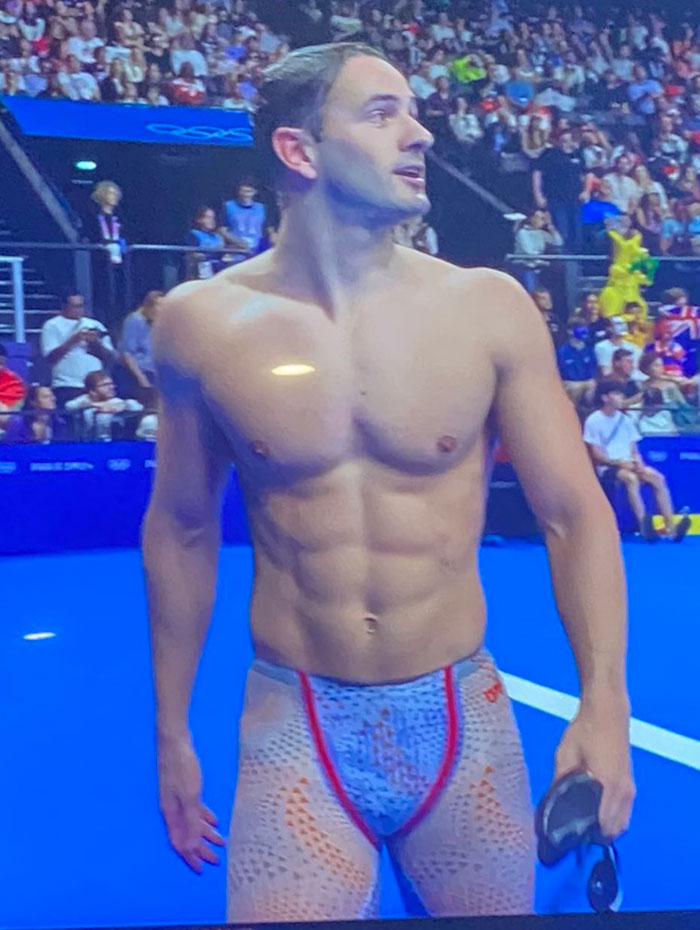
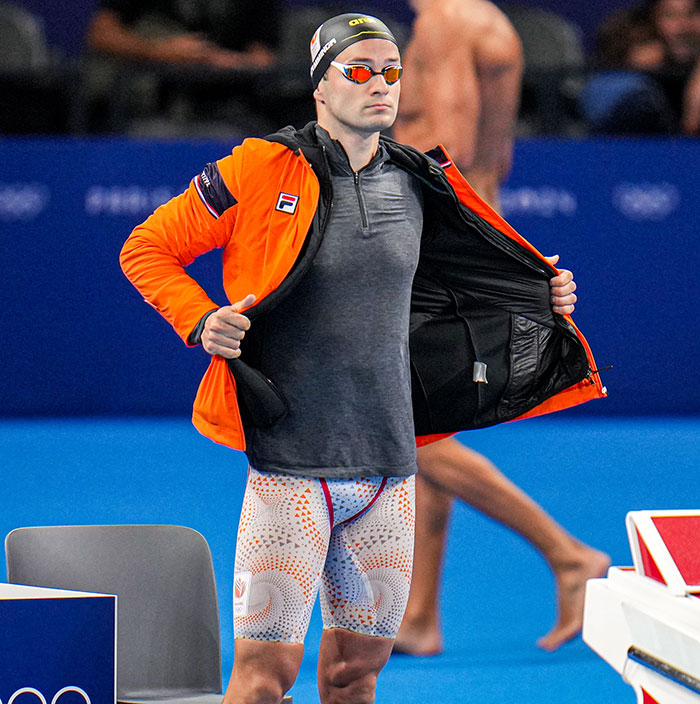
Image credits: Rene Nijhuis/BSR Agency/Getty Images
Ahead of the competition, the Katwijk native described a case that saw 23 Chinese swimmers test positive for a banned drug as a “lose-lose situation” while also questioning how the investigation was handled by the authorities ahead of the Olympic Games in Paris.
The World Anti-Doping Agency (WADA) confirmed reports in April that 23 Chinese swimmers tested positive for trimetazidine, a medication that increases blood flow to the heart, before the Tokyo Olympics in 2020, Reuters reported on July 18.
However, WADA reportedly accepted the findings of a Chinese investigation that this was due to substance contamination.
The 28-year-old athlete rocked a tightly fitted, glamorous pair of trunks that quickly went viral on social media
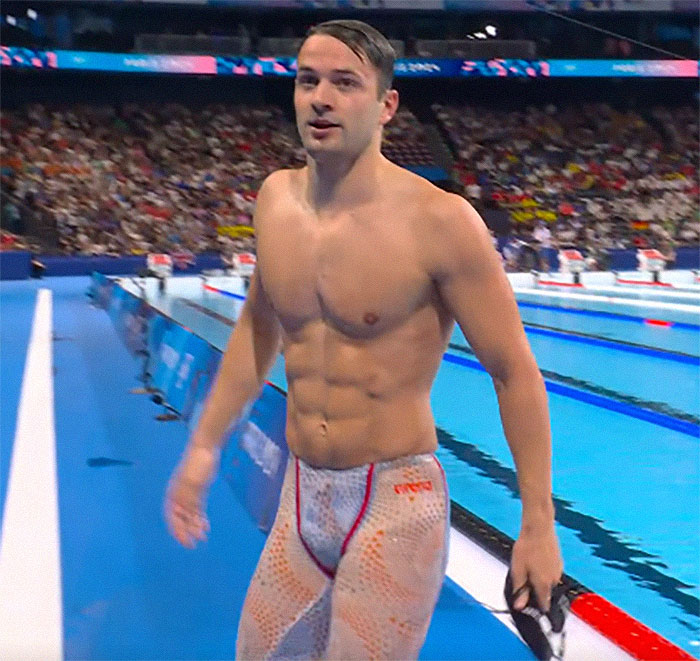
Arno, who won silver medals at the Tokyo Olympics in the 100m and 200m Breaststroke, said that even if due process was followed, the fact that “they didn’t tell anyone” about the positive tests until April was a bone of contention.
He told Reuters: “Everyone is questioning it, so it’s a lose-lose situation for everyone – for swimming lovers but also for the Chinese swimmers themselves.
“I think it’s hard to judge or say anything without knowing everything.”
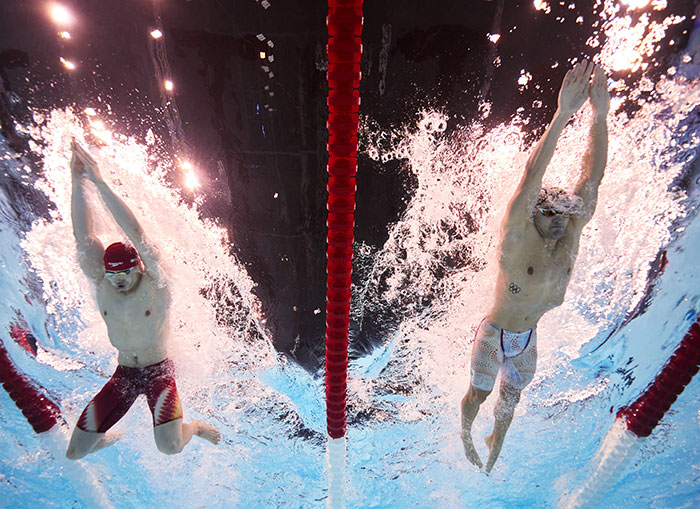
“The problem is the way in which it was handled.
“For them to just cover it up, not say anything instead of being upfront and transparent with us, I think that’s where the problem lies for most people.
“Whether they’re positive or not, I don’t know.
“I can’t say anything about it. I hope I can trust WADA that the conclusion was right… I’m just disappointed in the way it was handled.”
“Nothing wrong with it,” a reader commented

